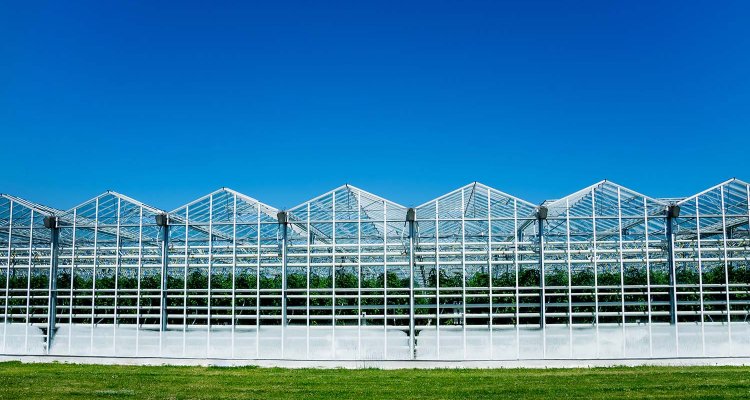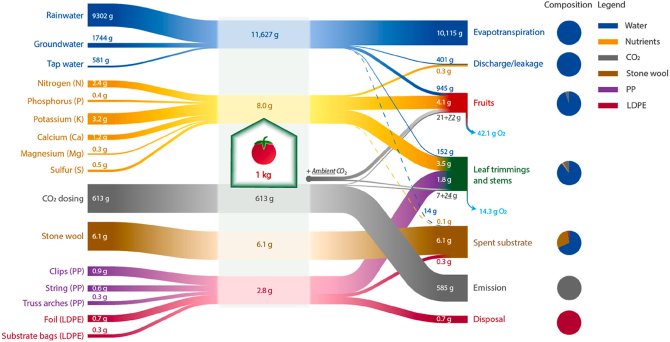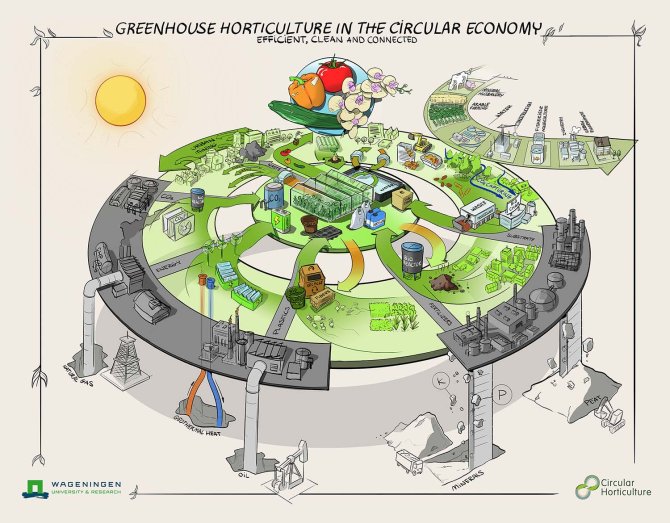
Project
Greenhouse Horticulture in a Circular Food System
Dutch greenhouse horticulture is known for its high efficiency, but efficiency is not enough for sustainability. The sector is reliant on inputs from finite natural reserves, contributing to resource depletion. What does the future of greenhouse horticulture look like in a circular food system, where resources are kept in use in a closed loop? In my PhD, I aim to investigate this question with a focus on nutrients and CO2.
Background
In the Netherlands, greenhouse horticulture represents less than 1% of agricultural land area and yet produces a quarter of its economic output, making it highly-intensive. Like other sectors, it faces sustainability challenges. The environmental impact of greenhouse horticulture has been studied many times and is a work in progress. Although reducing environmental impact is crucial, it is not enough to ensure sustainable greenhouse horticulture. Greenhouse horticulture depends on non-renewable inputs from finite natural reserves, for mineral fertilisers, CO2, plastics, and other consumables used in the crop cycle.
A lot of the high efficiency of greenhouse horticulture is due to reliance on these non-renewable inputs. This reliance exposes greenhouse horticulture to risks, which can be reduced by moving away from so-called ‘linear’ supply chains to more ‘circular’ ones, where material flows are kept in use to avoid resource depletion and environmental impact. Not only is this a sensible strategy – it is also a goal of the Dutch government, European Union and other organisations. Many studies and visions exist for circular agriculture and animal husbandry, but for circular greenhouse horticulture, many questions remain unanswered.
Project description
Current research in greenhouse horticulture mainly focuses on increasing efficiency or reducing environmental impact. Whilst essential, this is not enough to achieve sustainability of the sector. Despite the efficiency of greenhouse horticulture, most of its inputs come from finite sources, meaning the sector contributes to resource depletion and is vulnerable to supply disruptions. Where integrating greenhouse horticulture in a circular economy has been investigated, this has either been cursory or for small-scale systems.
This project focuses on CO2 and nutrients as key resources. The CO2 used in greenhouses is mostly derived from fossil sources, meaning alternatives will need to be found. For nutrients, phosphorus and nitrogen are chosen due to their environmental impact and projected scarcity of the former as a finite resource.
We start with a quantification of the consumable inputs of greenhouse horticulture, to give an overview of the current situation. Then, requirements for CO2 and nutrients, as well as alternatives, are investigated using literature and calculations in a novel methodology. Using measurements and analytical models of indoor climate data, biogenic sources of CO2 and direct air capture are evaluated. Similarly, promising pathways of circular sources are identified and compared for phosphorus and nitrogen.
Results

